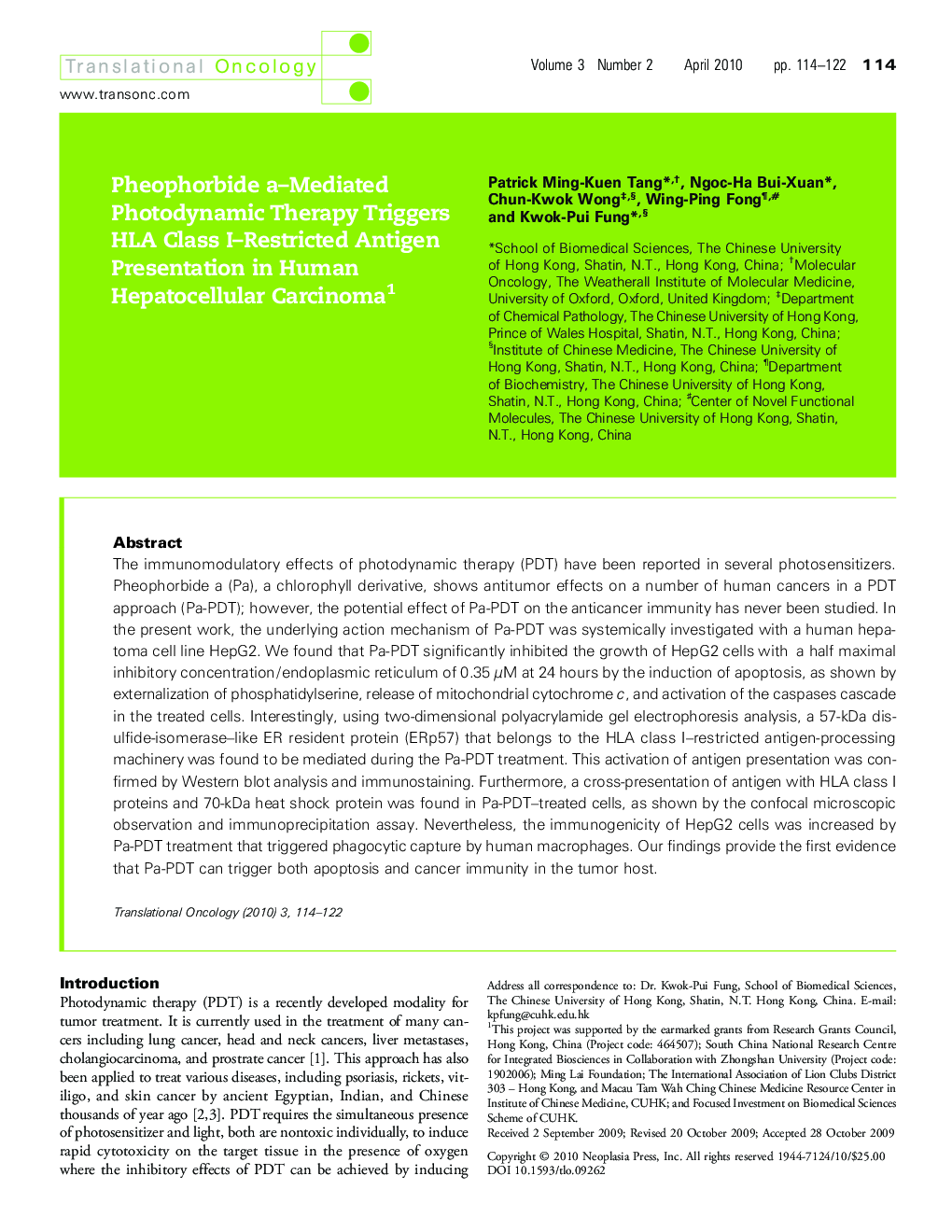| کد مقاله | کد نشریه | سال انتشار | مقاله انگلیسی | نسخه تمام متن |
|---|---|---|---|---|
| 2163822 | 1091453 | 2010 | 9 صفحه PDF | دانلود رایگان |

The immunomodulatory effects of photodynamic therapy (PDT) have been reported in several photosensitizers. Pheophorbide a (Pa), a chlorophyll derivative, shows antitumor effects on a number of human cancers in a PDT approach (Pa-PDT); however, the potential effect of Pa-PDT on the anticancer immunity has never been studied. In the present work, the underlying action mechanism of Pa-PDT was systemically investigated with a human hepatoma cell line HepG2. We found that Pa-PDT significantly inhibited the growth of HepG2 cells with a half maximal inhibitory concentration/endoplasmic reticulum of 0.35 µM at 24 hours by the induction of apoptosis, as shown by externalization of phosphatidylserine, release of mitochondrial cytochrome c, and activation of the caspases cascade in the treated cells. Interestingly, using two-dimensional polyacrylamide gel electrophoresis analysis, a 57-kDa disulfide-isomerase-like ER resident protein (ERp57) that belongs to the HLA class I-restricted antigen-processing machinery was found to be mediated during the Pa-PDT treatment. This activation of antigen presentation was confirmed by Western blot analysis and immunostaining. Furthermore, a cross-presentation of antigen with HLA class I proteins and 70-kDa heat shock protein was found in Pa-PDT-treated cells, as shown by the confocal microscopic observation and immunoprecipitation assay. Nevertheless, the immunogenicity of HepG2 cells was increased by Pa-PDT treatment that triggered phagocytic capture by human macrophages. Our findings provide the first evidence that Pa-PDT can trigger both apoptosis and cancer immunity in the tumor host.
Journal: Translational Oncology - Volume 3, Issue 2, April 2010, Pages 114-122